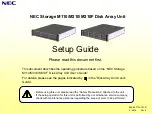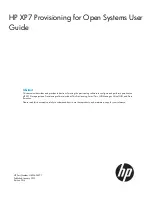
Safety Precautions and Maintenance
FOR OPTIMUM PERFORMANCE, PLEASE NOTE THE FOLLOWING
WHEN SETTING UP AND USING THE MULTISYNC INTELLIBASE AUDIO:
Read Instructions
— All the safety and operating instructions should be read before the appliance is operated.
Retain Instructions
— The operating instructions should be retained for future reference.
Heed Warning
— All warnings on the appliance and in the operating instructions should be adhered to.
Follow Instructions
— All operating and use instructions should be followed.
Water and Moisture
— The appliance should not be used near water – for example, near a bathtub, washbowl, kitchen
sink, laundry tub, in a wet basement, or near a swimming pool, etc.
Outdoor Use
— Warning: To reduce the risk of fire or electric shock, do not expose this appliance to rain or moisture.
Location
— The appliance should be installed in a stable location. Do not use the monitor while the base is removed.
Ventilation
— The appliance should be situated so that its location or position does not interfere with its proper ventilation.
For example, the appliance should not be situated on a bed, sofa, rug, or similar surface that may block the ventilation
openings; or placed in a built-in installation, such as a closed bookcase or cabinet that may impede the flow of air through the
ventilation openings.
Heat
— The appliance should be situated away from heat sources such as radiators, heat registers, stoves, or other
appliances (including amplifiers) that produce heat.
Power Sources
— Use the supplied AC adapter. The appliance should be connected to a power supply only of the type
described in the operating instructions or as marked on the appliance. Do not use the supplied AC adapter with any other devices.
Power-Cord Protection
— Power-supply cords should be routed so that they are not likely to be walked on or pinched by
items placed upon or against them. Pay particular attention to cords at plugs, convenience receptacles, and the point where
they exit from the appliance.
Image and Sound
— Adjust the sound output for optimal image and speaker clarity.
Grounding or Polarization
— Precautions should be taken so that the grounding or polarization means of an appliance
is not defeated.
Cleaning
— The appliance should be cleaned only with a polishing cloth or a soft dry cloth. Never clean with furniture wax,
benzine, insecticides or other volatile liquids since they may corrode the cabinet.
Non-Use Periods
— The power cord of the appliance should be unplugged from the outlet when left unused for a long
period of time.
Object and Liquid Entry
— Care should be taken so that objects do not fall and liquids are not spilled into the enclosure
through openings.
Damage Requiring Service
— The appliance should be serviced by qualified service personnel when:
• The power-supply cord or the plug has been damaged.
• Objects have fallen, or liquid has been spilled into the appliance.
• The appliance has been exposed to rain.
• The appliance does not appear to operate normally or exhibits a marked change in performance.
• The appliance has been dropped or the enclosure damaged.
Servicing — The user should not attempt to service the appliance. Servicing should be referred to qualified service personnel or
returned to the dealer or call the NEC TECH service line for assistance at 1-800-632-4662.
The FCC Wants You to Know
1. Use the attached specified cable with the MultiSync IntelliBase so as not to interfere with radio and television reception.
Please use the supplied power cable or equivalent to ensure FCC compliance.
2. This equipment has been tested and found to comply with the limits for a Class B digital device, pursuant to Part 15 of the
FCC rules. These limits are designed to provide reasonable protection against harmful interference in a residential installation.
This equipment generates, uses and can radiate radio frequency energy and, if not installed and used in accordance with the
instructions, may cause harmful interference to radio communications. However, there is no guarantee that interference will not
occur in a particular installation. If this equipment does cause harmful interference to radio or television reception, which can
be determined by turning the equipment off and on, the user is encouraged to try to correct the interference by one or more of
the following measures:
a) Reorient or relocate the receiving antenna.
b) Increase the separation between the equipment and receiver.
c) Connect the equipment to an outlet on a circuit different from that to which the receiver is connected.
d) Consult the dealer or an experienced radio/TV technician for help.
If necessary, the user should contact the dealer or an experienced radio/television technician for additional suggestions. The
user may find the following booklet, prepared by the Federal Communications Commission, helpful: “How to Identify and
Resolve Radio-TV Interference Problems.” This booklet is available from the U.S. Government Printing Office, Washington,
D.C., 20402, Stock No. 004-000-00345-4
NEC-ADA201 Eng/Fr. manual 9/8/98 12:25 PM Page 3




































